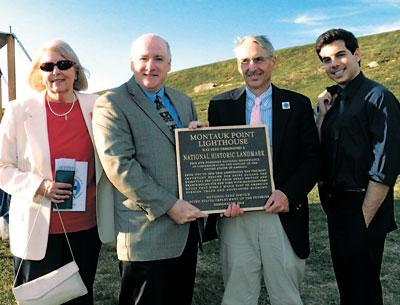A+ for Town Finances
A+ for Town Finances
East Hampton Town’s finances got an A-plus from the outside auditing firm that finished a 2011 audit in mid-July. It was the earliest that one of the annual audits, which must be submitted to the state comptroller and other agencies by Sept. 30 of each year, has been completed — another positive sign of the town’s efforts to reorganize once-chaotic financial practices.
Dave Tellier of the certified public accounting firm Nawrocki Smith said at an East Hampton Town Board meeting on Tuesday that “everything was met right on target,” in terms of providing the proper records for the audit, and that the town is in “generally a sound financial position.”
Unlike in recent years following the wake of financial mismanagement under the previous McGintee administration, the auditors were able to give a “qualified opinion” based on “solid and accurate information,” Mr. Tellier said. Previous audits indicated that the results were “unqualified,” as the financial records were lacking.
For the first time in recent memory, the auditors listed no “material weaknesses” or “significant deficiencies” in budget or accounting practices, nor any findings at all of noncompliance with accounting standards, nor did they have recommendations for improvement.
A recommendation from two prior audits, to adopt policies to monitor spending on capital projects on a per-project basis, is being implemented, the most recent audit notes.
Last year, the town brought in almost $10 million more than it spent, Mr. Tellier said in his presentation, despite a 5.6-percent increase in overall spending from 2010.
All of the town’s major funds had surpluses at the end of last year, Mr. Tellier said. The whole-town general operating fund had a surplus of $6.7 million, or 26 percent of its total, up from a $2.8 million deficit at the beginning of the year, while the part-town general operating fund, which excludes services not used by residents of East Hampton Village and the East Hampton side of Sag Harbor Village, had a $1.4 million surplus. Town policy is to achieve a 20-percent surplus balance in all of its funds.
During 2011, revenues of approximately $430,000 more than was expected, and included in the annual budget, flowed into the general fund, while spending from that fund was about $900,000 less than had been anticipated.
The highway fund ended the year with a $2.5 million surplus, a decrease by $1.4 million of its previous surplus balance, as the board used some of that surplus for highway expenditures last year in order to reduce the amount needed from property taxes. The refuse and garbage districts fund ended the year with a $2.9 million surplus.
The only fund with a deficit as of the close of 2011 was the sewer districts fund, with a negative balance of $118,000. That figure had, however, been reduced from a $219,000 deficit, according to the audit.
All of the money owed from other town funds to the community preservation fund, which had been improperly raided to cover cash flow shortages during the past administration, has been repaid, as has a “significant portion” of the money owed from other funds to the town’s capital projects account, according to the audit.







